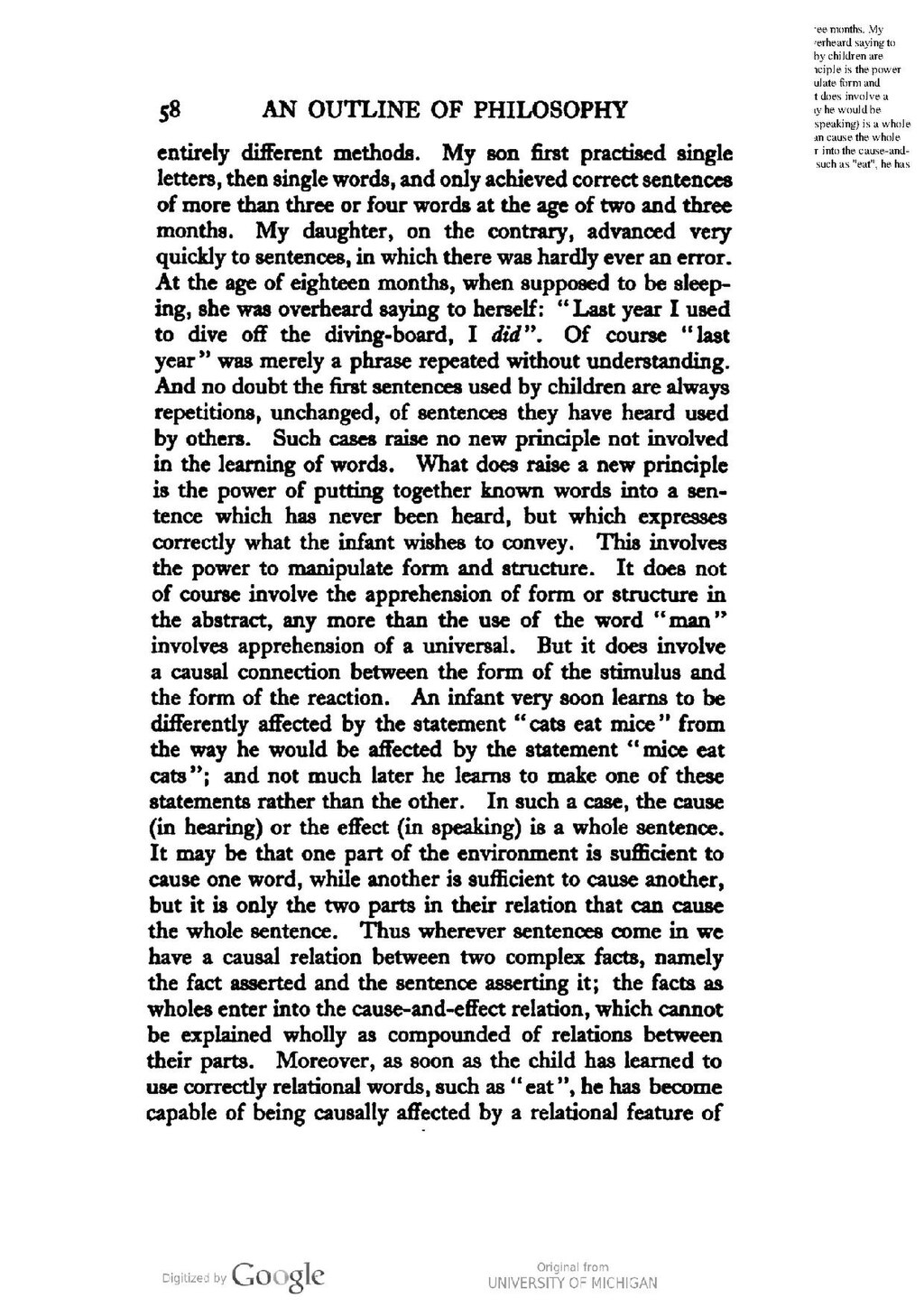entirely different methods. My son first practised single letters, then single words, and only achieved correct sentences of more than three or four words at the age of two and three months. My daughter, on the contrary, advanced very quickly to sentences, in which there was hardly ever an error. At the age of eighteen months, when supposed to be sleeping, she was overheard saying to herself: "Last year I used to dive off the diving-board, I did". Of course "last year" was merely a phrase repeated without understanding. And no doubt the first sentences used by children are always repetitions, unchanged, of sentences they have heard used by others. Such cases raise no new principle not involved in the learning of words. What does raise a new principle is the power of putting together known words into a sentence which has never been heard, but which expresses correctly what the infant wishes to convey. This involves the power to manipulate form and structure. It does not of course involve the apprehension of form or structure in the abstract, any more than the use of the word "man" involves apprehension of a universal. But it does involve a causal connection between the form of the stimulus and the form of the reaction. An infant very soon learns to be differently affected by the statement "cats eat mice" from the way he would be affected by the statement "mice eat cats"; and not much later he learns to make one of these statements rather than the other. In such a case, the cause (in hearing) or the effect (in speaking) is a whole sentence. It may be that one part of the environment is sufficient to cause one word, while another is sufficient to cause another, but it is only the two parts in their relation that can cause the whole sentence. Thus wherever sentences come in we have a causal relation between two complex facts, namely the fact asserted and the sentence asserting it; the facts as wholes enter into the cause-and-effect relation, which cannot be explained wholly as compounded of relations between their parts. Moreover, as soon as the child has learned to use correctly relational words, such as "eat", he has become capable of being causally affected by a relational feature of
